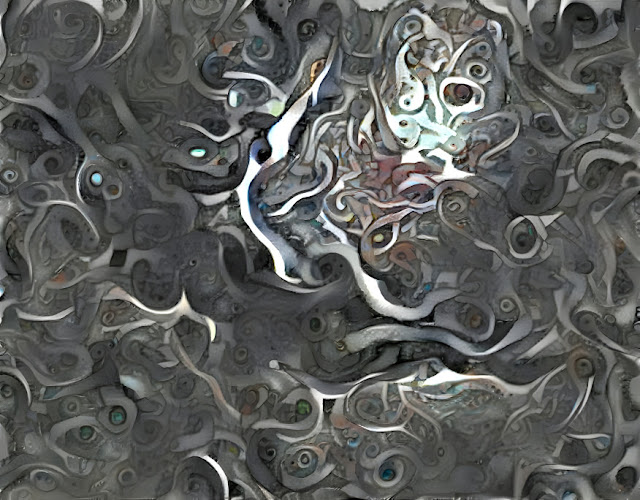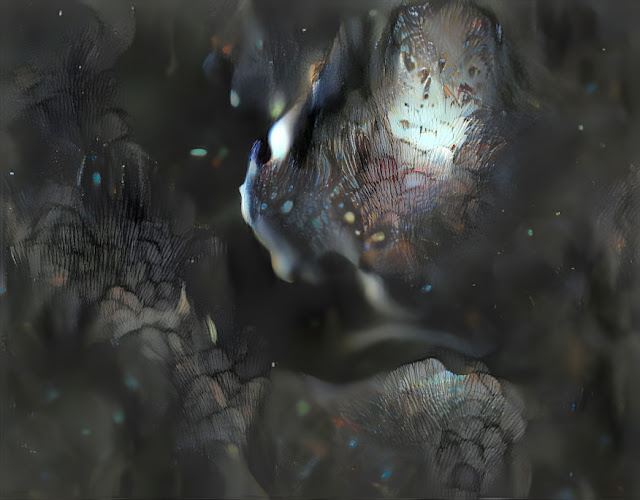
I'm trying to wrap my mind around our reality. Our planet generates a magnetic field from deep within its center known as a magnetosphere. Stars have their own magnetospheres; our Sun's is known as The Interplanetary Magnetic Field. The heliosphere is the gigantic protective bubble created by our Sun that contains our entire solar system within it (shielding it from harsh interstellar radiation). Our planet's atmosphere further protects us from our local star's excessive radiation. As the Sun emits plasma it continuously keeps this heliosphere inflated by the solar wind; meanwhile, our Sun is presumably in motion on a trajectory of its own orbiting the black hole at the center of our galaxy, and this forward motion generates a "bow shock" which appears just ahead of our heliosphere. The outer layer of our heliosphere is called the "heliopause," the borderline that both Voyager spacecraft recently crossed as they headed into interstellar space (Voyager 1 doing so in August of 2012; Voyager 2 escaped our system in November of 2018).
The Oort cloud (an enormous swarm of dwarf planets, comets and asteroids) is presumed to exist beyond our heliopause--in interstellar space--and the part I'm trying to wrap the heliosphere of my own mind around, is exactly how far from our Sun and in turn from our nearest bordering star (Proxima Centauri, only 4.2 light years away) does this Oort Cloud lie? The current estimates range from 2,000 to 200,000 AUs (.03 to 3.2 light years). Begging the question as a matter of course--does every star in our galaxy have its own respective Oort cloud, or is it more that all the stars in our galaxy share a common interstellar medium which the Dutch astronomer Jan Oort may have mistaken for a formation exclusive to our own solar system?
Estimates as to the Oort Cloud's thickness and/or distance from our Sun vary, so its unclear as to whether parts of it are much farther than others, or whether the estimations represent a potential range of distances. The longest range assessments place a portion of our Oort Cloud as far as 3.2 light years away (which is just over three-fourths of the distance to Proxima Centauri). So the real question becomes: Does Proxima Centauri have its own Oort Cloud? Its becoming more apparent that what we've mistaken for our own system's isolated Oort cloud may be, in fact, the interstellar medium which borders on all our galaxy's stars.
This last presumption seems to make the most sense. So now I like to picture every star as not having its own Oort cloud necessarily, but rather, I'm considering interstellar space itself as being in actuality one "meta-Oort-cloud" interspersed more or less evenly throughout our galaxy and furthermore, churned up by all the stars in it (where the mass gravitational effect of the Milky Way keeps these interstellar icy planetisimals tumbling around) until eventually, some get extracted into the heliosphere of any given star's system.
This idea generates a clearer set of implications. For one, it suggests a distinct possibility that all stars in any given galaxy are related. I imagine the constellations as belonging to vast clutches. Perhaps the idea of any given individual star as being an "only child" is nothing but a myth. Maybe they are the last sole remaining survivors of their family of stars, presuming there's any such thing. There's potential for the idea that all the stars in any given galaxy remain related to each other by definition, rendering each solar system as a single cell of the whole galactic colony.
The idea of all stars in a galaxy belonging to one great clade may be applied to galaxies themselves, of course. It's not difficult to imagine our own galaxy being a part of a vaster clutch of galaxies, indicating a probability that the entire known universe derives from a common source. Which brings us to the next link in this molecular chain of reasoning. That of the consideration of the implications to the axiom "as above, so below." For example, the presence of the interstellar and universal "Oort Medium" (if you will) begs comparisons to biological cells, making us wonder if interstellar space might be somewhat analogous to the cytoplasm within a cell, for instance--or, to get more to the point--this interspersed area of tumbling planetisimals may in fact more resemble the walls of biological cells, rendering the cytoplasm comparison better left as being analogous to the charged plasma particles found within our own heliosphere.
There's a parallel to be found in this parable of my search for meaning in existence, in this cosmic legend into which we are steeped. To paraphrase the ideal investigator, "eliminate the impossible, and whatever's left, however unlikely, remains the truth." I liken the veracity of this potential revelation to looking into a metaphysical mirror. I am left with a sense of hopefulness that one may be led to this proverbial mirror (even if one's mind may not be prepared to withstand that much exposure to the reflection revealed).
I am beginning to comprehend a little more that if one individual human being were to be led to this professed mirror (hidden behind a velvet curtain shall we say) and were given the opportunity to part that curtain by his own hand, to see revealed before him that reflection he'd devoted his entire life toward attaining, that most men who found themselves in this position would not be able to resist parting the curtain to get at least a good glimpse of it. Furthermore, while I notice myself possibly arriving closer to that room with the curtain and mirror, the more I feel certain I will not be that individual that dares to take a glimpse of the big reveal. Rather, I find myself developing past the need to understand the mystery of our existence. I am beginning to realize that I value the mystery itself far more than the possibility of having it solved or unveiled.
In conclusion, I can now imagine what I might discover behind the curtain. It won't be a mirror, but another person guarding yet another curtain behind which the actual mirror lies, assuming this proverbial mirror even exists. And this guardian of the truth will pass on to me the sacred role of Protector of the Curtain, stating in no uncertain terms, "You who have traveled this far across the molecular chain of reasoning to get so close to the ultimate secret of existence are in fact the prime candidate for taking on the responsibility of making sure no human being ever steps foot across this threshold to witness what's behind this final curtain," and he will hand me the Antigravitational Vorpal Plasma Sword of Truth which bonds itself at the subatomic level with whosoever grasps it by the hilt. Even if I were emboldened to meet the challenge posed by the Guardian and attempt to battle him for the prospect of looking into the mirror, the skill and dedication with which he'd defend the secret would insinuate itself into my consciousness whether I bested him or not. I'd likely undergo a transformation even if I defeated him, and invariably be led toward picking up his fallen blade, then find myself having transubstantiated into the next Guardian at the Portal of Truth. There'd be no point in my daring to look behind the flimsy curtain I'd then be in the position of protecting, because for one I'd have zero interest in doing so and for another, I'd begin to suspect that there was quite likely no such thing as the mirror after all.








